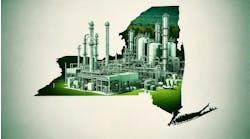Once an energy audit team presents its findings, along with a prioritized list of actions, decision makers must decide which — if not all — recommendations should be implemented. (Keep in mind, unless the cost benefits of the recommendations are attractive, decision makers will focus on other compelling budget priorities.) Then, for those projects getting the go-ahead, the third phase of the energy audit cycle can begin.[pullquote]Implementing phase: The first step in the third phase of the energy audit cycle (Phases 1 and 2 were highlighted in last month’s column, “Break Energy Audits into Phases, Part I") is to develop an implementation plan. Each team should include members from relevant disciplines. Some recommendations, such as fixing steam leaks and reducing excess air levels at the fuel-fired boilers and heaters are straightforward and require obvious actions. These projects can be started quickly, typically yield quick results, and require zero or little capital investment. For instance, in a graphite plant that molds and bakes calcined petroleum coke powder into large-sized electrodes, an energy expert attempted to control excess air at one of several baking furnaces to record the best-achievable operational settings. Because the baking cycle undergoes several stages of heating over a 72-hr period, a portable flue gas analyzer, along with the recordings of the existing on-line flue-gas oxygen analyzer, monitored and adjusted hourly the excess air level. Due to its capability of measuring the CO and combustible gas contents in flue gas, the portable flue gas analyzer trimmed the oxygen levels. A fuel-oil flow totalizer also recorded hourly readings from the baking furnace. This oxygen-trimming exercise resulted in developing a chart of operational settings for the baking furnace that established just 5% excess air achieved complete combustion at some stages of the baking cycle. The exercise also reduced fuel oil consumption 12% compared to the average fuel oil use per cycle recorded earlier in that same furnace.Some energy audit recommendations require well-defined individual project plans and more-detailed engineering before implementation, such as those requiring partial or total plant shutdowns. Typically, these recommendations should be evaluated carefully with more supportive operating data as well as detailed cost estimations that should include budget quotes from equipment vendors and contractors. These projects typically take longer to implement. For example, in a medium-sized oil-field chemicals manufacturing plant in Oklahoma, an energy audit produced seven recommendations. Management approved all seven and initiated detailed engineering development for each one. The results confirmed the savings levels for each recommendation, but the detailed project cost estimates for implementing them was much higher on two of them. So, management decided to implement the five projects that were still attractive. This stage also can help fine-tune the initial energy audit recommendations. For instance, in one of the projects (installing an economizer to a boiler), after a detailed review, engineers changed the heat recovery source from boiler feed water to soft water heated by steam. In another condensate recovery project, the group changed the initial suggested location of the condensate pump to facilitate future maintenance needs. Hence, detailed engineering is essential to make better investment decisions. Sustaining phase: As projects are implemented, the next phase focuses on measuring and quantifying results to determine whether the project achieved the initial envisioned goals. Measurements should verify the actual attained operational settings compared to the expected or set target levels. Deviations from the initial savings estimates commonly remain within 60–110% range. In most cases, the lower values in this range stem from inaccurate assumptions due to lack of flow measuring devices in the processes. Changes in the plant’s production levels also can cause deviations. Energy audits typically recommend installing permanent monitoring instruments to sustain the achieved results. Simple monitoring devices such as on-line flue-gas oxygen indicators contribute significantly to preserving optimum combustion conditions at fuel-fired boilers and furnaces. Adjusting maintenance programs and practices is another important requirement to sustaining energy audit results. This involves providing necessary preventive and predictive maintenance activities to the process equipment, and cleaning and calibrating monitoring devices. Timely troubleshooting support and prompt repairs during failures are essential to sustain the achieved energy savings. Periodically, a follow-up energy audit may be required to verify and sustain the results and to systematically repeat the cyclic process.
VEN V. VENKATESAN is Chemical Processing's Energy Columnist. You can e-mail him at [email protected]




